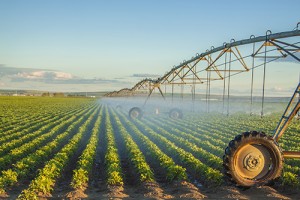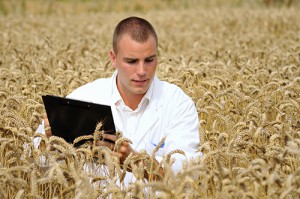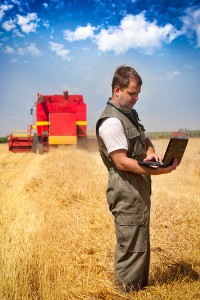 I recently spent time among wheat fields and continue to be amazed at the advances in farming, particularly irrigation. I have moved a few irrigation pipes in my life, but my experience is a far cry from the automated precision technology used today. I set out to find out how technology and water mix and how the combination enhances crop production.
I recently spent time among wheat fields and continue to be amazed at the advances in farming, particularly irrigation. I have moved a few irrigation pipes in my life, but my experience is a far cry from the automated precision technology used today. I set out to find out how technology and water mix and how the combination enhances crop production.
Crop Metrics
I have covered farm technologies in past blogs, specifically soil moisture probes. The use of these probes is only the beginning of the process for increasing crop yield. Several of these probes can be used per acre to collect data wirelessly on the moisture content in a particular area of the field. All of this data is combined into a visual map that shows the dry and wet spots. Topographic maps can be added to show the high and low spots of a field. All of this data acts as input to the irrigation system. Companies such as CropMetrics analyze all of these data points and create a comprehensive plan for covering the most ground with the least amount of water.
Precision Watering
Crop irrigation has evolved from a hose to hand lines to wheel lines to the modern pivot. A pivot pumps water through one point to several sprinklers radiating out from the axis. The pivot then swings across the field powered by a variable speed drive mechanism on each tower. The further the distance from the pivot point, the faster the wheels have to move in order to cover a larger arc. If you have ever flown over the Midwest in the summer you have most likely seen a grid of green circles, which is the result of pivot irrigation. One of the largest of these sprinklers is 1300 meters long, covering over 1300 acres of sugar plantation in Brazil.
Companies such as Lindsay and Reinke have transformed simple plant watering to a science by applying data analysis technology. They input the data mentioned earlier and create a series of water maps for a field. The GPS equipped irrigation pivot can then apply precisely targeted moisture to the field. Over an area of several hundred acres, there can be a lot of variability in soil type, existing moisture, runoff, and terrain. All of this information is factored in when watering the crops. The sprinklers can be automated, or adjusted manually through a touchscreen control or an app. The goal is twofold: water conservation and maximum yield. This is one example of how technology is improving production while enhancing sustainability of a limited resource.
Thoughts
I see technology used in traditionally low tech areas such as irrigation and crop production and wonder what other applications are waiting to be enhanced or automated. It is a brave new world and it will take intelligent workers to make the most of it. Let me know your thoughts
Kelly Brown is an IT professional and assistant professor of practice for the UO Applied Information Management Master’s Degree Program. He writes about IT and business topics that keep him up at night.




